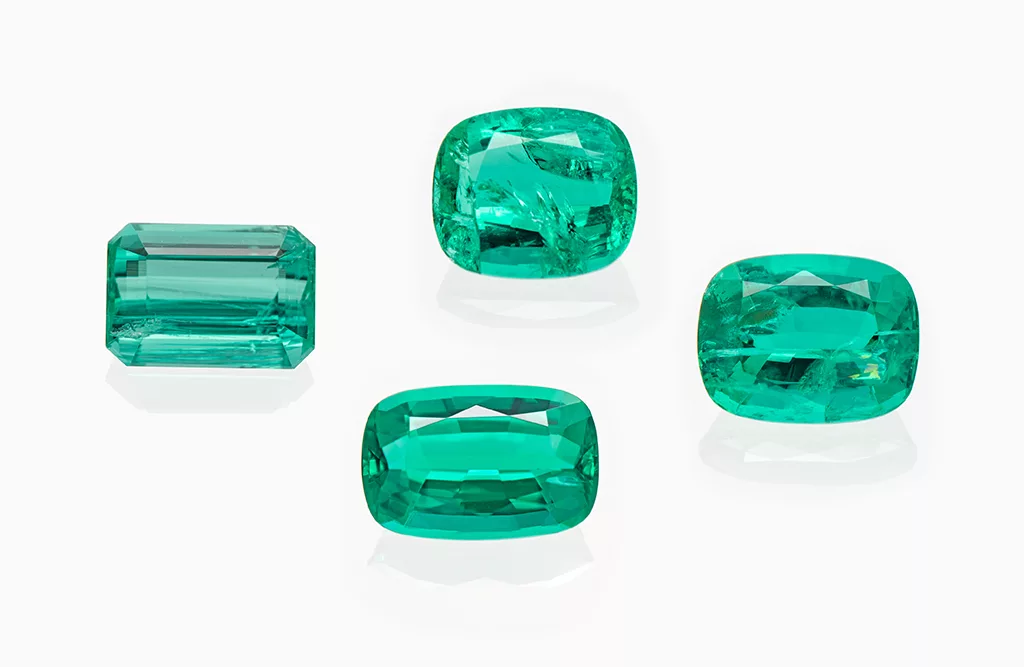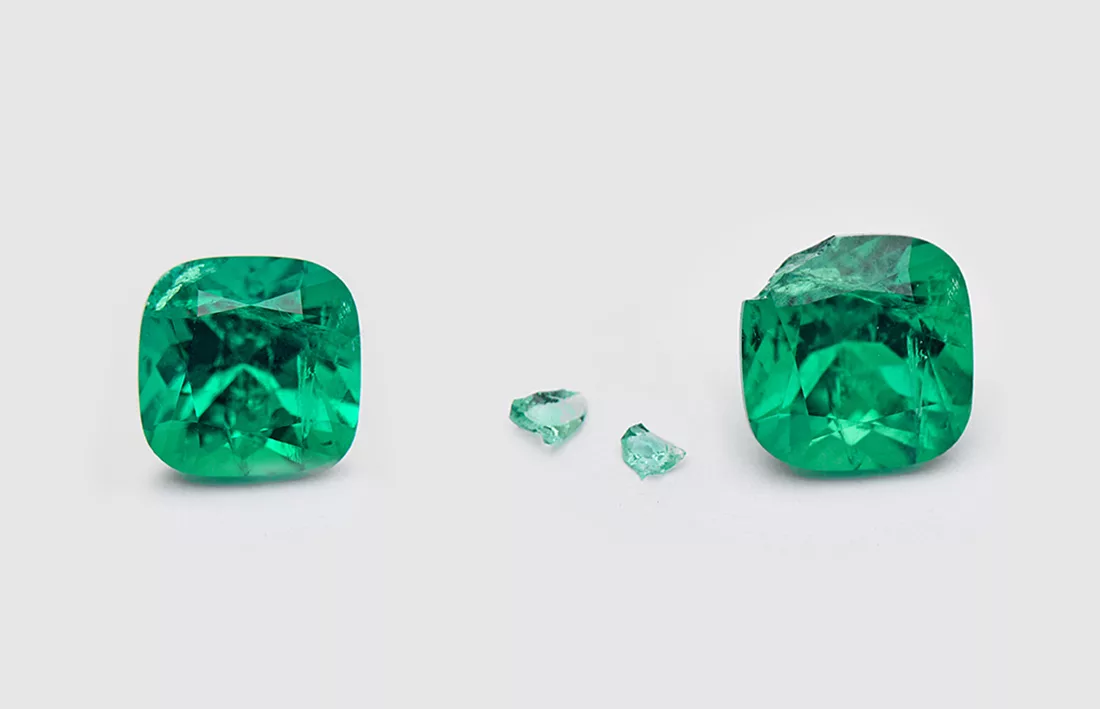Gemmological Characterisation of Emeralds from Musakashi, Zambia, and Implications for Their Geographic Origin Determination
Gemmological Characterisation of Emeralds from Musakash […]
Bachelor thesis on fissure filling substances in emeralds
Fissures in emeralds are commonly filled with colourless substances such as oil, wax, or artificial resin to modify and enhance their clarity. This treatment is not new and has been known for many centuries, specifically with oil.
Dyed quartz imitating emerald
From time to time, we receive some oddities for testing, such as the rough “emerald”, reportedly originating from Africa and submitted by a client for testing. Already a quick visual examination made it clear that this was not an emerald. The surface was dominated by conchoidal fractures and covered partly
News from the SSEF (2022)
Presentation by Dr. Michael S. Krzemnicki at the Swiss Gemmological Society SGG conference in 2022.
A never-ending story: recheck service and report validity check on myssef.ch for emeralds
Imagine life as an emerald. Just born in the rocks and growing, you get joggled and bruised by mother nature and later by the mining process. So, already in your young age you carry quite some scars and fractures, which reduce your true beauty considerably and may not make it so easy to find a good mate (emeral
New emeralds from Musakashi, Zambia, appear on the market
New emeralds from Musakashi, Zambia, appear on the mark […]
Emeralds from Riverina, Australia
In early 2019, an Australian client submitted a small series of gem- quality light green emeralds ranging from 2.01 – 5.80 ct in weight, which reportedly originated from the same rough crystal from the Riverina deposit in Western Australia (Figure 1). Known since the late 1970s (Whitfield, 1975), this deposit
A New Type of Emerald from Afghanistan’s Panjshir Valley
A New Type of Emerald from Afghanistan’s Panjshir Valle […]
Multi-element analysis of minerals using laser ablation inductively coupled plasma time of flight mass spectrometry and geochemical data visualization using t-distributed stochastic neighbor embedding: case study on emeralds
Multi-element analysis of minerals using laser ablation […]
Chipping of Emeralds
The cleaning process of emeralds, often supported by mechanical tumbling and ultrasonic cleaning may result in chipping or even cracking of pre-existing fissures within emeralds at any time afterwards.









